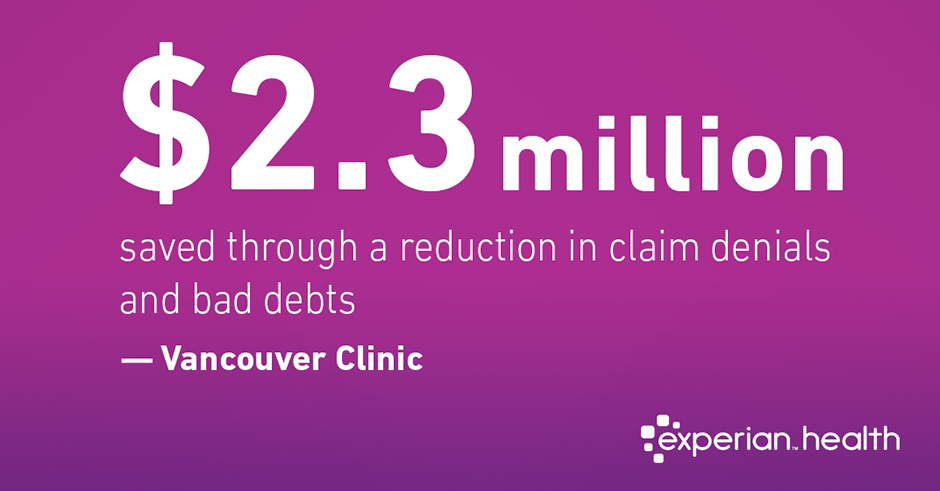
The Vancouver Clinic was facing the same problems that all healthcare organizations grapple with: too many claims denials and too much bad debt.
So, Paul Brown, the clinic’s chief financial officer, turned to his background in manufacturing technology to see how his organization could find efficiencies. He used his experience and knowledge to inform his and the clinic’s roadmap to implement change.
The first step was looking at quality. In manufacturing, every step in the process is studied closely and tested to ensure absolute accuracy. Vancouver Clinic did the same. From a patient perspective, it wanted a seamless experience, including making appointments, reducing patient time at reception, ensuring labs were returned quickly, and making sure patients had quick access to any prescriptions they needed.
Although the improvements Vancouver Clinic wanted to make originally were seen as a technology project, it quickly became evident that improving the process would also require training for staff and defining performance indicators.
However, as technology played a key role, Paul reached out to Experian Health to implement some much-needed automation in the revenue cycle process.
One big goal for the partnership was to improve revenue and collections, which is important as U.S. healthcare spending continues to skyrocket. Spending has reached $3.5 trillion, and Medicare bad debt adds up to more than $3.69 billion. Experts predict these numbers will continue to grow, and soon, the nation will spend close to 20 percent of the gross domestic product on healthcare alone.
Vancouver Clinic was also grappling with these issues. It had higher-than-average claims denial rates, which cost the clinic $10.5 million each year. It also had higher-than-average bad debt of $3.5 million. The goal was to reduce that by 50 percent, and the numbers are going in the right direction.
To get there, Vancouver Clinic took a multifaceted approach to implementing software solutions.
One solution was Payer Alerts, which creates authorization updates that reduce errors and inconsistencies before claims are submitted. When they’re detected, the alert format is easy to read and understand so corrections can be made quickly. Other technology solutions included Eligibility, which simplifies the insurance verification process; Payment Safe®, which is an efficient and seamless way to process patient payments; and Claim Scrubber, which helps submit clean claims to payers and reduce claim denials.
The results for Vancouver Clinic were quick and dramatic. Claims denial rates dropped more than 30 percent. The denial rate, which was around 14 percent, is now under nine percent.
Vancouver Clinic also reduced bad debt through more efficient patient processing by ensuring the clinic has the right insurance and personal information on patients.
By collaborating with Experian Health, Vancouver Clinic has turned things around and has already realized a reduction in claim denials and bad debts to save them $2.3 million.
An additional benefit of implementing these software changes is the ability for patients to use the self-service portal for the clinic. It allows patients to get estimates for services, set up payment schedules, pay their bills, schedule appointments, and provide feedback to the health system.
Giving patients the ability to take control of these tasks simplifies the process for everyone, reduces busywork for staff, and improves patient satisfaction.
Another efficiency that was implemented for staff was revamping software work lists. By reducing the number of lists they had to manage, employees were able to streamline their work.
In an effort to maintain and continue to improve efficiencies, several key performance indicators are monitored to ensure quality throughout every step of the process. In much the same way that manufacturing keeps an eye on each process along the way, Vancouver Clinic has sought to improve every detail to create a seamless experience for patients. Through its continued partnership with Experian Health, it is well on its way to getting there.



